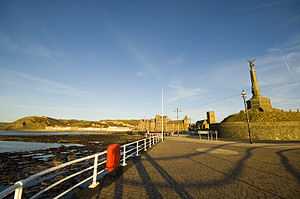Mario Rutelli


Mario Rutelli (Palermo, 4 April 1859 - 1941) was an Italian sculptor.
Biography
He was the son of Arch. d. Giovanni Rutelli and of d. Vita Romano. Rutelli's father was a well-known Italian architect and highly competitive building contractor-entrepreneur of the era. Among the many projects which he had officially completed was the technical oversight of the entire construction of the monumental Teatro Massimo Vittorio Emanuele in Palermo, the 3rd largest lyric theatre in all of Europe. The Teatro Massimo was completed by Giovanni Rutelli's building firm Rutelli and Machì.
Having studied at the Academy of Fine Arts of Palermo and then in Rome under Giulio Monteverde, Mario Rutelli's masterwork is the "Fontana delle Naiadi" in Piazza della Repubblica, Rome, which Benito Mussolini called the "exaltation of eternal youth, the capital's first salute to art".
His other works are located in Italy and abroad and they include:
- The monument to Anita Garibaldi on the Janiculum (a late work, but one as daring as his earlier works, such as "Gli Irosi").
- One of the Victories on the Vittoriano in Rome.
- The bronze Quadriga on the teatro Politeama at Palermo, with Apollo (the god of music) and Euterpe (the muse of lyric poetry) above it. (In this work, the riders on the sides is a portrait of Rutelli's master Benedetto Civiletti).
- The lion at the base of the Garibaldi monument in the Garibaldi garden in Palermo.
- The lion which personifies lyric poetry and which is located on the left side of Palermo's Teatro Massimo. (The lion at the right with Tragedy above it is by Benedetto Civiletti).
- The "Lyric" and "Apotheosis of Vittorio Emanuele" at the Teatro Vittorio Emanuele.
- The equestrian monument to Umberto I in Catania.
- The Fountain and commemorative monument at Agrigento.
- The Monument to Nicola Spedalieri in the Piazza Sforza Cesarini (near the Chiesa Nuova) in Rome.
Among his surviving works are the statue of Goethe at Munich; the colossal 22-metre high Victoria Monument in England; the war memorial in Aberystwyth (one of whose figures having what Welsh historian Gwyn Williams described as "the finest backside in Cardiganshire";[1] busts of Domenico Morelli and Giuseppe Maielli; and a bust of Edmondo De Amicis situated in Palermo's English Garden.
Notes
- ↑ Williams, Gwyn (2007), "The Finest Backside in Cardiganshire" in The Land Remembers, London: Futura at www.aberdareblog.co.uk
Source
| Wikimedia Commons has media related to Mario Rutelli. |
- This page is a translation of its Italian equivalent.